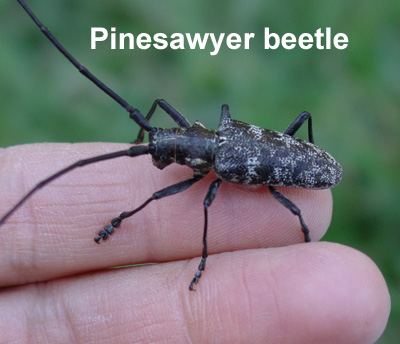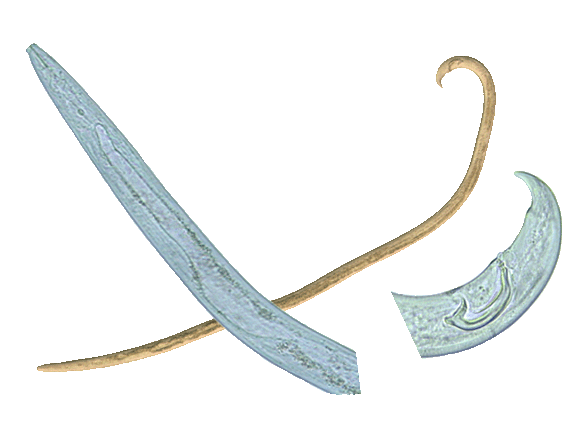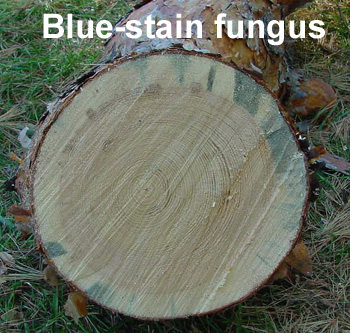|
The
culprits:
|
|

Lethal:

|
|
Several
organisms are involved in pine wilt disease. The nematode Bursaphelenchus
xylophilus is transported to the trees by Pinesawyer beetles,
and feed on Blue-stain fungi as well as cells lining the resin canals
of the tree. Bark beetles help to introduce the Blue-stain fungi
into the tree, allowing the nematodes to feed and multiply.
|
|

Bursaphelenchus
xylophilus
Pine wilt nematode
|
|

|
|
The nematode,
B. xylophilus is probably native to the midwest, but the trees it attacks
have been introduced.
|
|
|
Effects
on
susceptible
trees:
|
|
During
warm periods in the summer, the nematodes spread throughout the tree and
multiply very rapidly. As they destroy the resin canal cells, the tree's
water-moving system becomes clogged and resin flow slows, then stops. Wilt
symptoms develop and the tree dies.
|
|
 |
Why
the midwest?
|
Periods
of drought and hot temperatures place introduced tree species- such as
Scots pine- under stress, contributing to their susceptibility to disease.
Native pine species are not usually afffected by pine wilt disease.
|
|
|
Avoid planting
Scots pine in areas (Iowa, Missouri, Illinois, eastern Kansas, SE Nebraska)
where pine wilt is a threat.
|
|
What
to do:
|
Dead pines
should be cut promptly and burned, buried or chipped. Do not keep the wood
for firewood. Wood chips pose minimal risk of spreading pine wilt, but
beetles will continue to emerge from logs kept for firewood. Pinesawyer
beetles lay their eggs under the bark of the pine, and a new generation
emerges in the spring, ready to infect new pine trees.
|
|
|
|
|
|